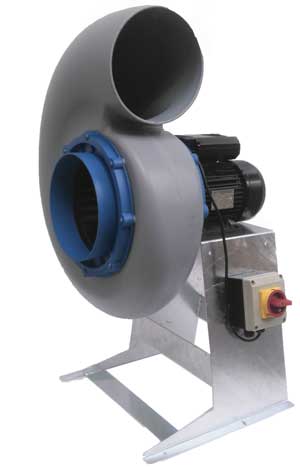 Ventilation of chemical storage areas is of paramount importance to guarantee clean air and a safe environment. It is needed for chemicals and their containers because they have the potential to release dangerous quantities of vapours or gases that are damaging, flammable, corrosive, irritating or toxic. Well ventilated storage is particularly important for substances classed as fuming or highly volatile.
Ventilation of chemical storage areas is of paramount importance to guarantee clean air and a safe environment. It is needed for chemicals and their containers because they have the potential to release dangerous quantities of vapours or gases that are damaging, flammable, corrosive, irritating or toxic. Well ventilated storage is particularly important for substances classed as fuming or highly volatile.
This applies particularly to the healthcare sector, which is one of the largest users of chemicals in the UK. Hospitals require a number of potentially hazardous chemicals in day to day maintenance, cleaning, sterilisation, testing and operating applications. Storage of these chemicals involves a number of considerations including temperature, ignition control, ventilation and segregation.

It is recommended that the necessary ventilation is achieved by extraction of air from the storage room or cupboard to an external exhaust at a safe distance from any openings (windows or doors) into the building.
The extraction system needs to be suitable for handling air that is potentially corrosive, given the nature of the chemical vapours to be carried from the storage area. Axair Fans offers a range of fans designed specifically for extracting corrosive air, with polypropylene construction. In addition to standard corrosive fume extraction, Axair also provides polypropylene fans suitable for ATEX Zone 2 applications. These areas will have been assessed by an official ATEX specialist and deemed to have a risk of the accidental presence of explosive fumes.
For the extraction of chemical fumes, it is recommended practice to site the fan at the end of the ductwork run. This keeps the ductwork under negative pressure so that if a leak occurred, the system would draw in clean air rather than blowing fumes into the building.
In order to accurately specify a fan, two key pieces of information are required: the airflow rate and the system resistance. Airflow rate will depend on the number of air changes per hour needed in the storage area, a figure usually specified by the consultant or the hospital. From the airflow rate, the size of the ductwork is determined and this allows the system resistance to be calculated.
Note that if there is a possibility the installation needs to be ATEX rated, an expert needs to establish the zone classification for the area. The information they provide will cover the size of the zoned area and the standard of equipment to be used in the zone.
Further information: 01782 349 430
sales@axair-fans.co.uk
www.axair-fans.co.uk

